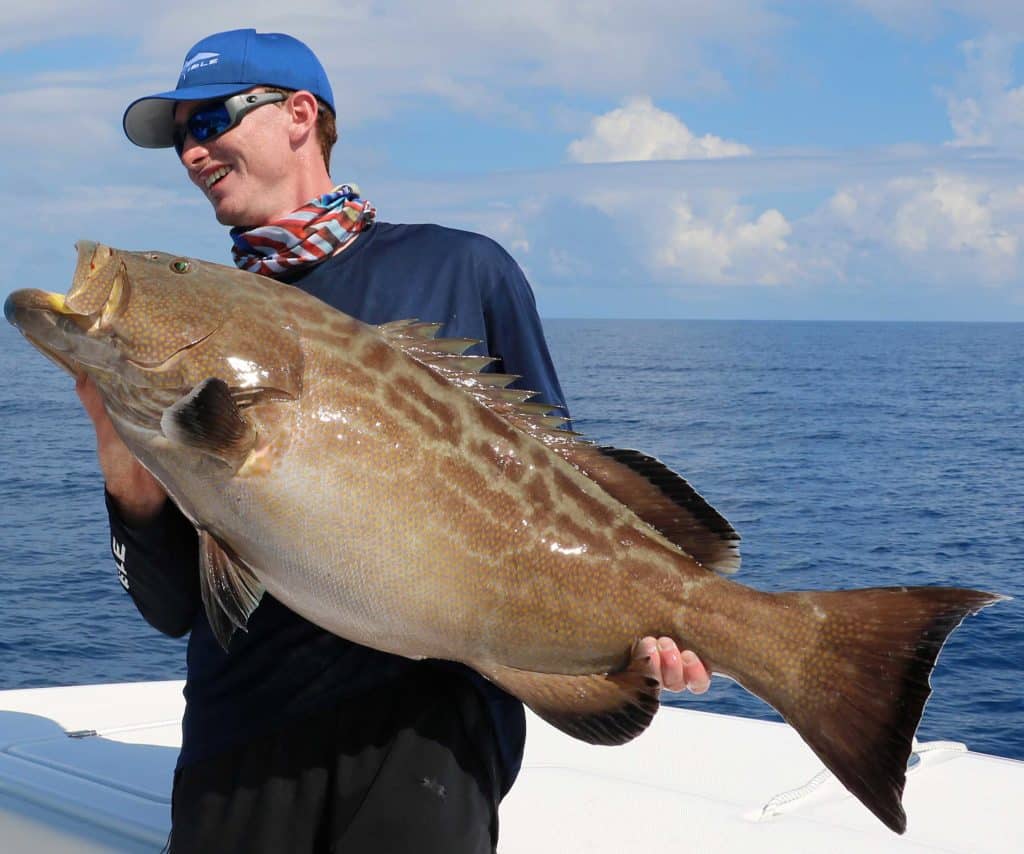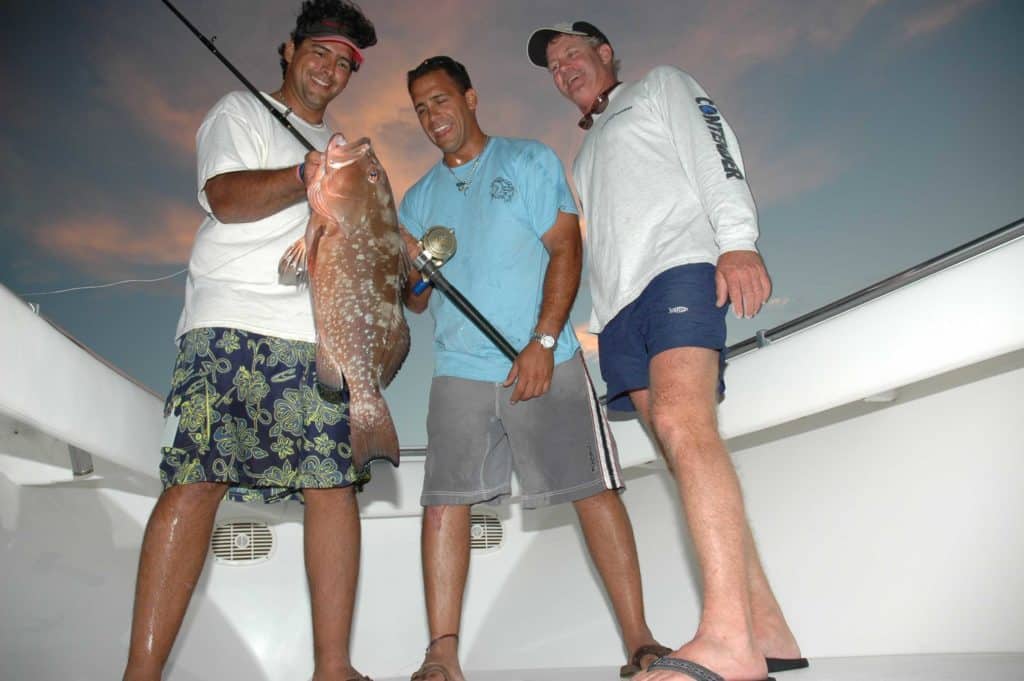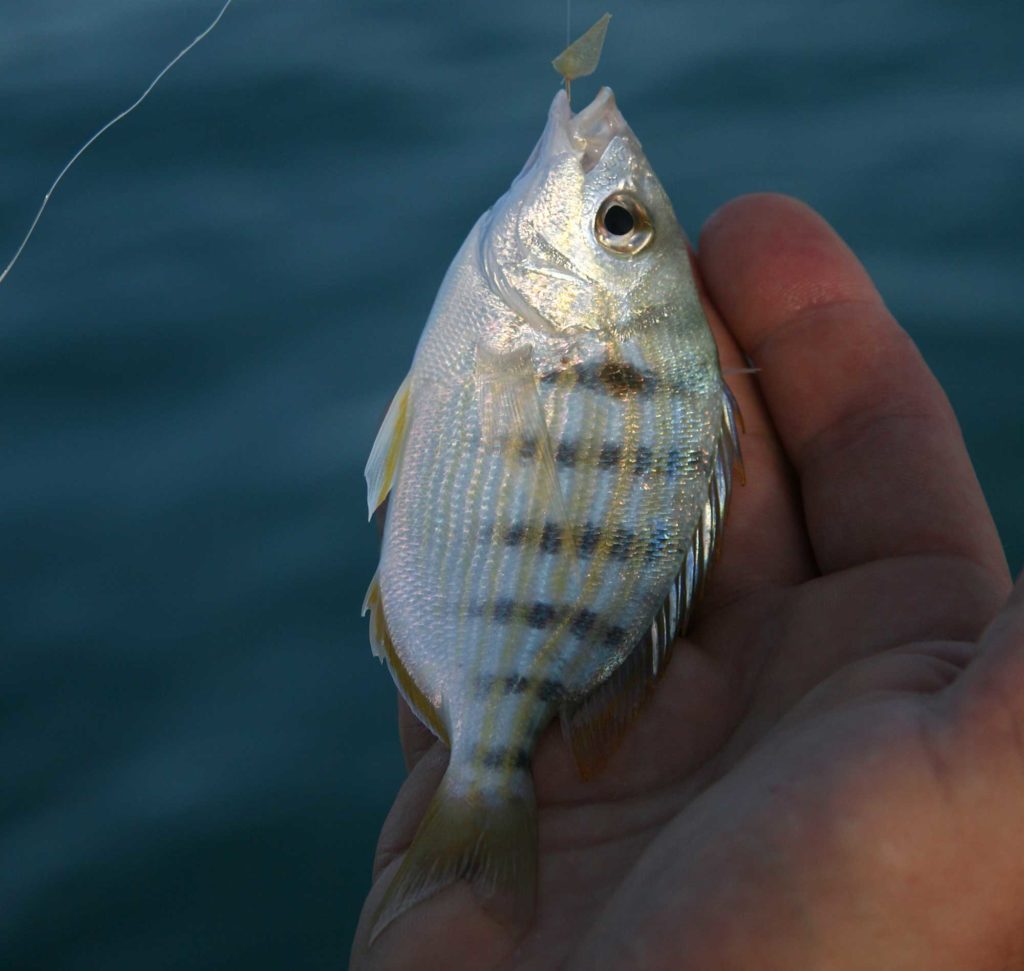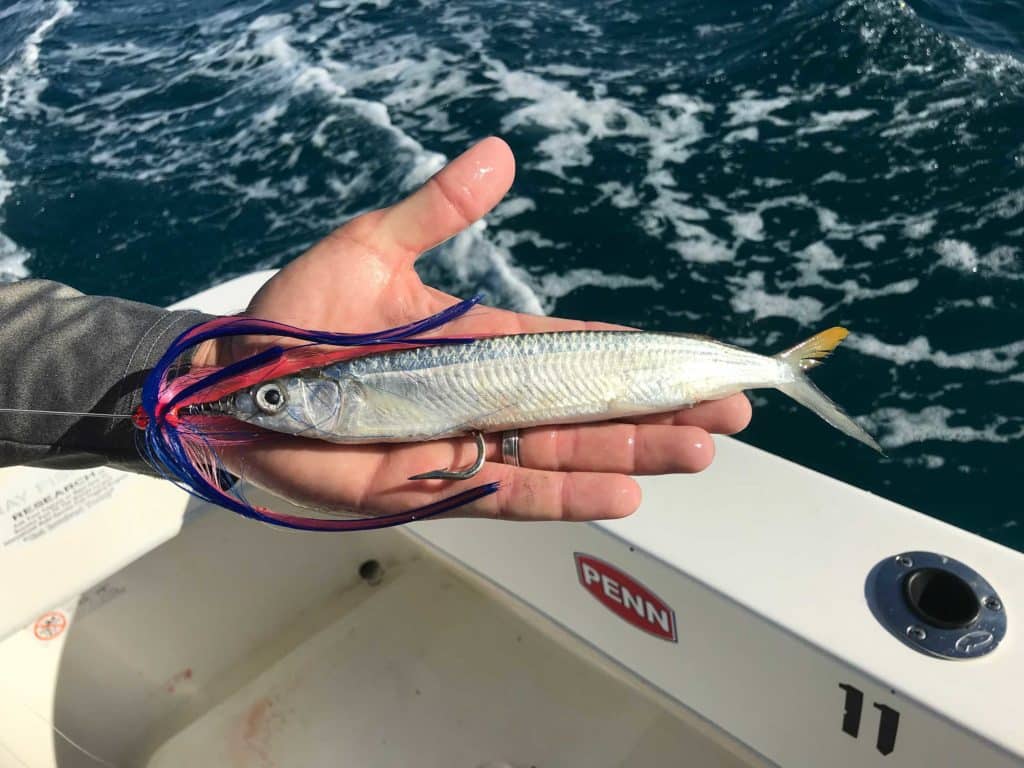
Anglers love groupers for two main reasons: They’re tough, strong fighters, and they’re delicious to eat. In South Florida, November and December rank as prime months to catch black groupers, in part because they’re abundant but also because the grouper season closes for four months on January 1.
That closure, which runs through April 30 in Atlantic waters, started in 2010 to allow the populations of black, gag and red groupers to increase in number and in size, as well as to protect the fish during their spawning seasons. The closure appears to be working, as anglers have been catching more and bigger groupers.
“We’ve already had very good black grouper fishing this fall,” says Capt. Bouncer Smith of Miami Beach, who retired earlier this year after 54 years as a charter captain. “It seems to be a bumper crop of them this year.”
The minimum size limit for black and gag groupers is 24 inches, and reds must be 20 inches. Anglers can keep a total of three groupers per day, but only one can be a black or a gag. The other two, or all three, can be red groupers.

Live Ones
Most anglers prefer to live-bait around coral reefs and wrecks, either anchoring upcurrent, drifting or trolling their baits. “Probably the most consistently productive bait that is readily available is pinfish,” Smith notes. “With that being said, especially from now until December, if you caught live ballyhoo and slow-trolled them in 15 to 50 feet of water, wherever you find a reef edge, they’re very, very effective.”
But, he adds, there’s an even better live bait for grouper — a 1- to 3-pound baby bonito. Troll for them with a Sabikilike rig made from small spoons and bonefish jigs with a light trolling weight on the leader above the hooks. “You’re trolling those little lures around all the wrecks out to 200 feet, and at some point you’ll catch baby bonitos,” he says.
Rig your grouper outfit with a 9/0 triple-strength circle hook and a 20-foot, 120-pound leader tied to a three-way swivel. Tie a 3-pound weight attached to a short piece of monofilament to the bottom of the swivel. “As soon as you catch a baby bonito, you hook it through the upper lip and you drop it down on the upstream side of the wreck. And you better have all the drag you can afford,” Smith says. “That live bonito is the No. 1 black grouper food you can drop down. It’s a great bait anytime, but the little bonitos are very common in the fall and the black groupers get common in the fall.”

Tackle Tricks
Once you hook a keeper grouper, the fish typically swims right back into the wreck or reef where it was sheltering. Having the proper tackle makes the difference between losing the fish and pulling it away from its home, Smith says.
Smith prefers using monofilament for his main line, although braided line has become highly popular because it drops a bait quickly to the bottom and it allows anglers to better feel the bite. “If you’re truly targeting big groupers, you’re better off with real heavy monofilament and the craziest, tightest drag you can imagine fishing,” he says. “Braid doesn’t give to the pressure. Braid either holds or it breaks.”
When using 80- or 100-pound monofilament line and a 120-pound leader, you can fish a lot of drag. “When you’re turning your head and ducking, waiting for that line to break, it’s going to stretch instead of break, and therefore you can put a lot more heat on that grouper with heavy mono than you can with braid.”
Smith uses a 7-foot, solid fiberglass rod for grouper for the same pliability reasons. “If you can find one with a really good reel seat and butt, you can’t beat it for grouper fishing. But today, most people use a 5½- to 6-foot standup rod,” he says.
To the rod, Smith adds a two-speed lever-drag Penn International so he can shift to high gear when retrieving the bait, and drop to low gear after a fish hits.

Troll Patrol
Capt. Buddy Carey of the famed Pier 5 charter fleet in Miami perfected trolling for grouper more than 50 years ago. His method still works today.
Smith trolls a Sea Witch with a ballyhoo rigged on a 7/0 triple-strength 3417 Mustad J hook at the end of a 100-foot length of 100-pound monofilament leader connected to a planer. The planer’s size depends on how deep Smith wants the bait to swim. He uses a Penn International 50 spooled with 65-pound braided line to fish along coral reefs in 50 feet of water or shallower.
“The groupers, on occasion, come up and hit it on top of the water, but basically you want the bait about 10 feet off the bottom,” he says. If the bait runs too deep, the fish can more easily take you back into the rocks. If the bait runs too shallow, the grouper won’t bother.
In addition to trolling reefs, Smith works the edges of the ship channels at Port Everglades, Lake Worth, and Fort Pierce inlets as well as Government Cut. The channels can also be fished with lures. “For the angler who isn’t fired up about trolling for groupers but wants to put his toe in the water, trolling Rapala X-Rap 30s or 40s, depending on the depth of water, is a very effective way to learn about trolling for grouper,” he says.
Read Next: Trolling With Lipped Plugs
White seems to be the most effective color. Sanding the top of the lure and painting it yellow makes it even more effective, he says, because black groupers eat yellowtail snapper.
In Government Cut, water depths average 20 to 30 feet. The channel drops to 50 feet, where the groupers wait to ambush prey. Trolling an X-Rap 40 along that wall can prove highly effective.
Similar channel walls along the Intracoastal Waterway hold gag groupers. “Inside Haulover Inlet, there are some walls that are about a 6-foot drop straight down,” Smith says. “It’s also real, real good right in downtown Miami, which has some really well-defined walls.”
Whether you troll or live-bait, now is the time to target grouper. Otherwise you’ll have to wait until May to enjoy a grouper sandwich.








